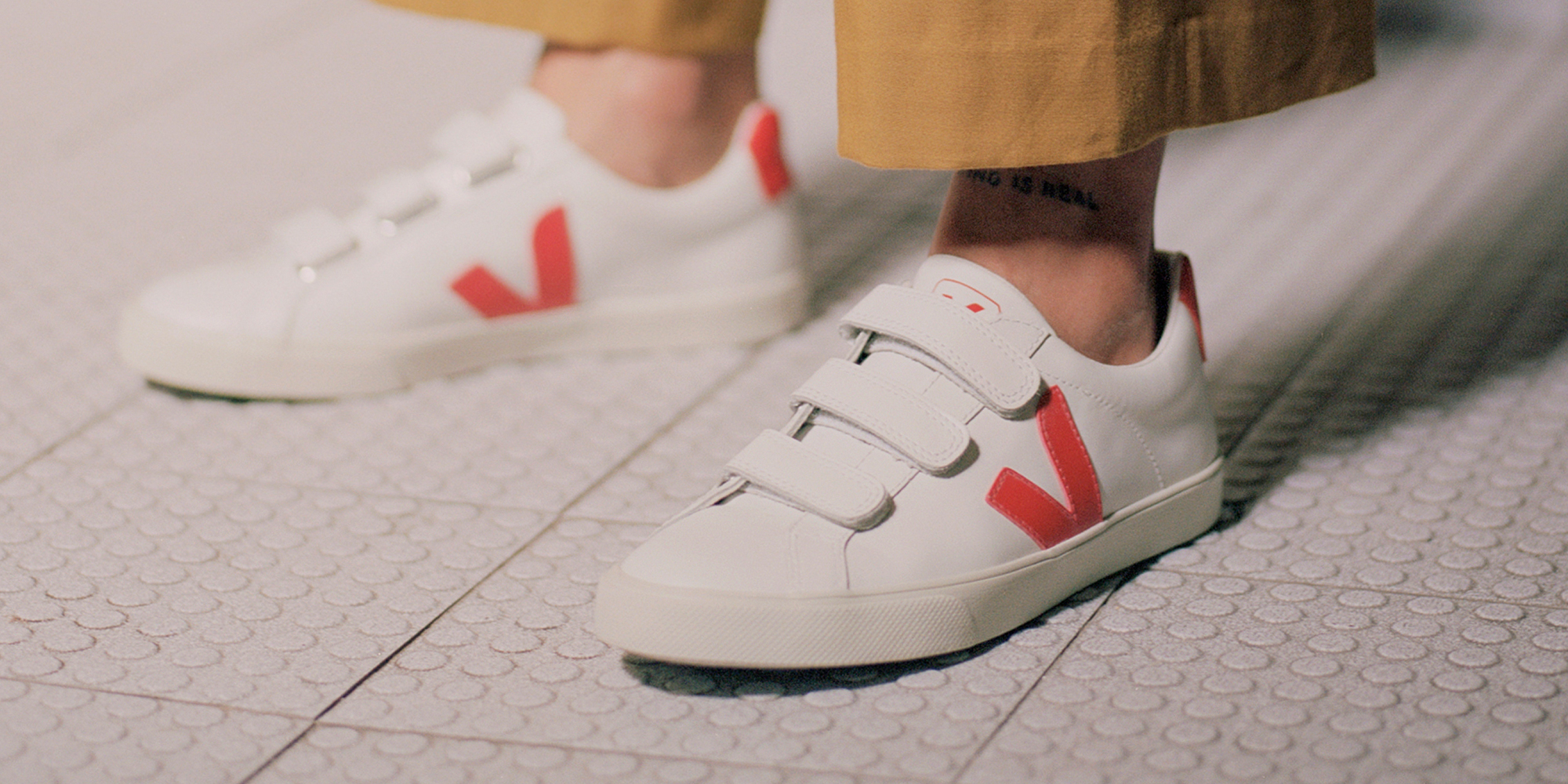Mountains of textile waste keep piling up around the world, making clear we’re producing far too many clothes. But just how many remains a controversy.
100 billion question marks
In an industry infamous for misinformation, one basic number we should know by now is how many clothes are made each year. But no one in the industry has a clear answer.
Certainly, there are estimates about clothing production volume, but they are nearly impossible to verify. Production allegedly doubled in the 2000s with the rise of fast fashion—surpassing more than 100 billion garments a year in 2014, according to a report from McKinsey. But other estimates have varied widely, putting the number anywhere between 80 and 150 billion garments a year. Many in the sustainable fashion space still cite these estimates despite the fact that they don’t seem based on scientific evidence or verifiable data. And they’re increasingly out of date. The 100 billion estimate is nearly a decade old—a decade that has seen the cultural acceleration of ultra-cheap, disposable fashion thanks to the likes of SHEIN, Boohoo, and more.
While searching for an accurate number leads to dead ends, what’s clear is that too many clothes are produced each year. And despite all the lip service they give transparency, brands won’t tell us.
According to Fashion Revolution’s Transparency Index 2022, a stunning 85% of the industry does not disclose their annual product volumes despite an endless, echoing call from advocates, citizens, and executives for fashion to reduce its negative impact.
What’s stopping brands from sharing such a basic dataset? The answers to that question reveal the dynamics keeping the industry from making significant progress on overproduction, the waste crisis, and overall environmental impacts.
Fashion’s misinformation problem
The fashion industry’s inconsistent data—whether that’s issues with brand disclosure or more foundational, research-driven analysis—has long been a point of contention.
“This misinformation problem is deeply entrenched,” explains Sandra Capponi, co-founder of Good On You, which published this report. “It’s the very thing that led us to founding Good On You in the first place: to help people see through the greenwashing and get info they can trust. But when ultra fast fashion brands like Boohoo and SHEIN are shouting out about their sustainability credentials, we know the problem is massive and the consequences very real.”
A prickly combination of irresponsible marketing practices; a lack of funding for peer-reviewed research, and a general lack of oversight of science-based methodology standards may be partly to blame for the industry’s lingering misinformation.
Yet despite a range of industry initiatives, there is no legally-binding, industry-wide, or globally objective way of auditing a fashion brand’s responsibility performance. Instead, the industry largely operates based on voluntary disclosure from brands.
And in a regulatory environment where brands are not obliged to disclose such information, it is fashion and apparel companies themselves that are failing to be more transparent.
“I think [brands] would say it’s hard to keep track because of complex supply chains,” says Ruth MacGilp, a spokesperson for Fashion Revolution, a London-based charity that has published an annual report since 2017 to account for fashion’s transparency efforts. “[Fashion Revolution’s] argument is that every business should know its output. The reason they’re not telling us is that these numbers represent such a huge amount of products: it’s disgusting.”
Certainly, it’s difficult for anyone to wrap their heads around the complexity of fashion’s supply chains, Capponi explains. “It’s difficult for brands to even know where a garment has been and who has touched it before it arrives in the store or on your doorstep,” she says. “But brands have a responsibility to do better.”
Production and waste at an unforeseen level
To understand fashion’s unprecedented overproduction crisis, you only need to survey the landfills. As with production volume, it’s hard to get an accurate estimate of textile waste, as well. In fact, we don’t know how much clothing is actually sent to landfills. More than 90 million tonnes of textile waste may be created each year, by one estimate. But the mountains of clothing waste dumped on countries from Ghana to Chile make clear the problem is only getting worse, and as the 2023 Textile Exchange Material Market Report reveals, global fibre production per person has increased from 8.3 kilograms in 1975 to 14.6 kilograms per person in 2022.
The emotional response to waste and production on this scale—particularly when it comes to fast fashion—speaks to an industry-wide bewilderment with how such numbers are even possible.
In spring 2022, for example, an infographic about SHEIN’s “incomparable churn” sent shock-waves through social media. SHEIN had reportedly uploaded more than 300,000 individual new styles to its website year to date, Business of Fashion reported. That number blew the original architects of fast fashion (H&M Group, Zara, Boohoo.com) out of the water. This data (originally compiled by analytics platform EDITED to help fashion decode the brand’s ultra fast business model) highlights the tension between certain industry leaders who see numbers of such a scale as a mark of business success and others who condemn the practice as an irresponsible affront to a planet in crisis.
Such an uncomfortable clash of ideologies gets to the crux of emerging degrowth principles that are slowly taking hold in many corners of the industry. A rejection of the fast fashion business model; decoupling the production of cheap garments from profitability, and ultimately producing fewer garments (that we repair instead of discard) are examples of core strategies that the sustainable fashion movement is trying to grapple with.
But as Fashion Revolution’s Transparency Index alludes to, implementing this work at scale is immensely challenging without reliable data to work from.
“The reason the index exists is to incentivise brands to be more transparent,” MacGilp says. “We hope that with more brands disclosing, it’ll be a knock-on effect for industry-wide change.”
Hiding behind the complexity of it all
If trying to picture unwanted mountains of textile seems intimidating, try visualising the network of the fashion industry’s global supply chain. Across different regions, stakeholders, tier suppliers, shipping routes from farming to fabric, it’s a level of complexity that escalates according to fashion’s freewheeling growth objectives. And no brand’s supply chain is quite like another’s.
“Sometimes we assume that brands and corporations’ internal operations are very much the same: that one system’s organisation exists like another,” says Natalie Grillon, founder of Open Supply Hub whose work includes mapping more than 90,000 facilities in the apparel sector to clean, standardise, and open up those data sets. “What we’ve found working with brand supply chain information is that this is very much not the case.”
Divergences in digital tracking tools and how data exchange happens across team structures is where fashion gets lost in its own “complex supply chain” mess, Grillon explains.
“If a brand is working with an agent, for example, it may not be possible to have per factory or per facility data: it’s difficult to know how much product they make if they don’t know their supply chain directly.”
But it’s more than likely that the biggest players in fashion have a sense. And they may be hiding behind the complexity of it all, Grillon admits: “On an aggregate level, they probably know.”
“Let’s not pretend that every brand and corporation is on board with this transparency and sustainability agenda—and let’s not pretend that all consumers are either,” Grillon reminds us. “The majority of people are still not aware that there’s a waste problem in this industry.”
Despite extensive sustainability strategies from companies (and the personal efforts of many well-intentioned individuals embedded within them), the industry-wide disconnect between brand speak and the waste they generate undermines the values they claim to be built on.
In a now legendary viral TikTok, New York-based waste consultant Anna Sacks (known as “The Trash Walker”) read out consumer-friendly sustainability copy from Coach’s repair program (eg “don’t ditch it—repair it!”) while holding slashed product she’d acquired from a store dumpster. The incident was so detrimental to the brand that Coach issued a statement in response, claiming that “the damaged product that was being destroyed in stores represents approximately 1% of units globally.”
Empowering consumers to act
It’s clear that getting brands to tell us how many clothes they make depends on this agenda being elevated in as many public domains as possible: increasing the pressure on fashion to publish its impact.
The stakes are real. Greater transparency is an essential first step in addressing the industry’s overall impacts, says Capponi. But she also argues that perfect can’t be the enemy of progress.
“Like most things, there’s a balance”. Capponi co-founded Good On You after recognising that consumers wanted to shop more sustainably but, because of missing or poorly-communicated information, didn’t know where to start. “We shouldn’t wait for perfect data to help consumers make better choices. We should give them the best information that we currently have access to and empower them to take action today.”
The swells of a mass movement interested in and insistent on addressing the question marks are building. What comes next must be a global commitment to accountability in which production volume disclosure is the rule, not the exception, within sustainability reporting in fashion.



















